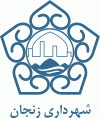Zanjan (Zanjān)
 |
Zanjan is known for its handcrafts such as knives, traditional sandals, called charoogh, and malileh, a handcraft made with silver wires. Zanjani artists make many things like various decorative dishes and their special covers as well as silver jewelry. In ancient times, Zanjan was known for its stainless and sharp knives. But this tradition is gradually becoming extinct by introduction of Chinese-made knives into the market which are far cheaper, more abundant and less artistic. Many villagers today are traditional carpet weavers. Zanjan's population boasts the highest level of happiness among the people of 30 other provinces in Iran, according to a detailed survey conducted by Isna.
According to the Nuzhat al-Qulub of the 14th-century Iranian geographer Hamdallah Mustawfi (died after 1339/40), Zanjan was said to have been founded by the first Sasanian ruler Ardashir I ((r. 224 – 242)), who named it "Shahin." During the Arab invasion of Iran, Zanjan was conquered in 645 by a force led by al-Barra ibn Azib. Medieval geographers generally agree that Zanjan was located in the region of Jibal/Persian Iraq, near the frontier of the neighbouring region of Azerbaijan. Some geographers also include Zanjan as part of Daylam or Ray.
After 833, the Abbasid Caliphate had a chain of forts constructed from Zanjan to Ardabil to counter the 817–837 rebellion of the Khurramite leader Babak Khorramdin (died 838). In the 10th-century, Zanjan was ruled by local Daylamite dynasties such as the Musafirids (919–1062). According to the 13th-century Arab geographer Yaqut al-Hamawi (died 1229), the Persians referred the city as "Zangan." During the Ilkhanate era (1256–1335), the inhabitants were reported by Hamdallah Mustawfi to have spoken "pure Pahlavi" (pahlavī-e rāst), a Median or northern form of Persian.
One important moment in the history of the city was in 1851 when the city became a center for the suppressed Babi religious movement, along with Neyriz and a fortress known as Shaykh Tabarsi. The forces of the central government captured the Babi fort in Zanjan after a long siege on the orders of Grand Vizier (Prime Minister of Iran) Amir Kabir and killed or expelled the Bab's followers.
Before becoming the capital of the namesake Zanjan province, Zanjan was a county of the Gilan province.
Map - Zanjan (Zanjān)
Map
Country - Iran
 |
 |
| Flag of Iran | |
The country is home to one of the world's oldest civilizations, beginning with the formation of the Elamite kingdoms in the fourth millennium BC. It was first unified by the Medes, an ancient Iranian people, in the seventh century BC, and reached its territorial height in the sixth century BC, when Cyrus the Great founded the Achaemenid Persian Empire, which became one of the largest empires in history and a superpower. The Achaemenid Empire fell to Alexander the Great in the fourth century BC and was subsequently divided into several Hellenistic states. An Iranian rebellion established the Parthian Empire in the third century BC, which was succeeded in the third century AD by the Sassanid Empire, a major world power for the next four centuries. Arab Muslims conquered the empire in the seventh century AD, which led to the Islamization of Iran. It subsequently became a major center of Islamic culture and learning, with its art, literature, philosophy, and architecture spreading across the Muslim world and beyond during the Islamic Golden Age. Over the next two centuries, a series of native Iranian Muslim dynasties emerged before the Seljuk Turks and the Mongols conquered the region. In the 15th century, the native Safavids re-established a unified Iranian state and national identity, and converted the country to Shia Islam. Under the reign of Nader Shah in the 18th century, Iran presided over the most powerful military in the world, though by the 19th century, a series of conflicts with the Russian Empire led to significant territorial losses. The early 20th century saw the Persian Constitutional Revolution. Efforts to nationalize its fossil fuel supply from Western companies led to an Anglo-American coup in 1953, which resulted in greater autocratic rule under Mohammad Reza Pahlavi and growing Western political influence. He went on to launch a far-reaching series of reforms in 1963. After the Iranian Revolution, the current Islamic Republic was established in 1979 by Ruhollah Khomeini, who became the country's first Supreme Leader.
Currency / Language
| ISO | Currency | Symbol | Significant figures |
|---|---|---|---|
| IRR | Iranian rial | ï·¼ | 2 |
| ISO | Language |
|---|---|
| KU | Kurdish language |
| FA | Persian language |















